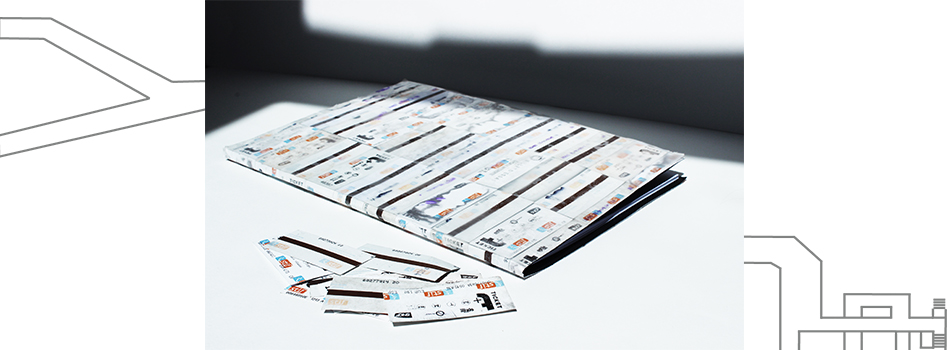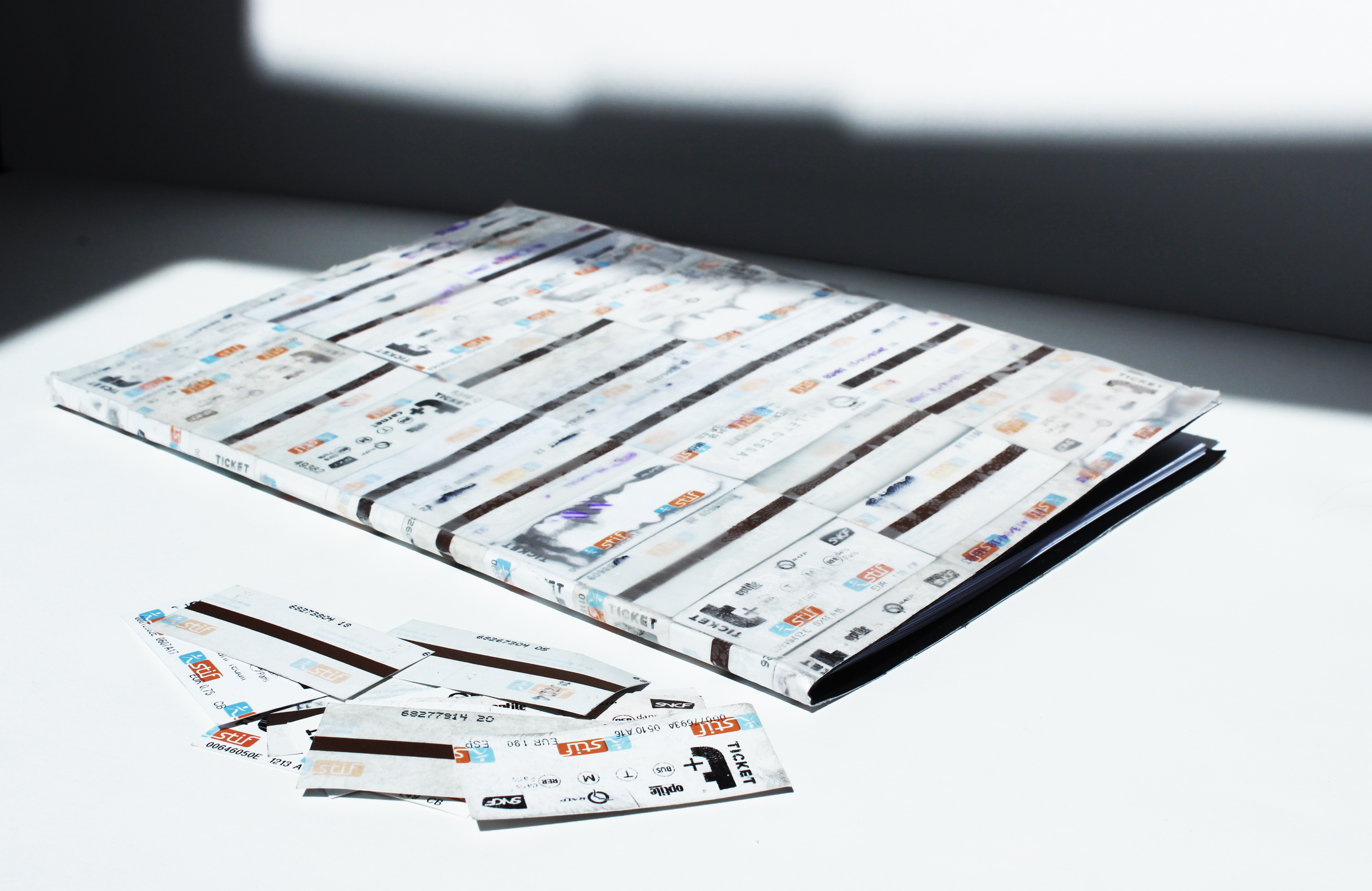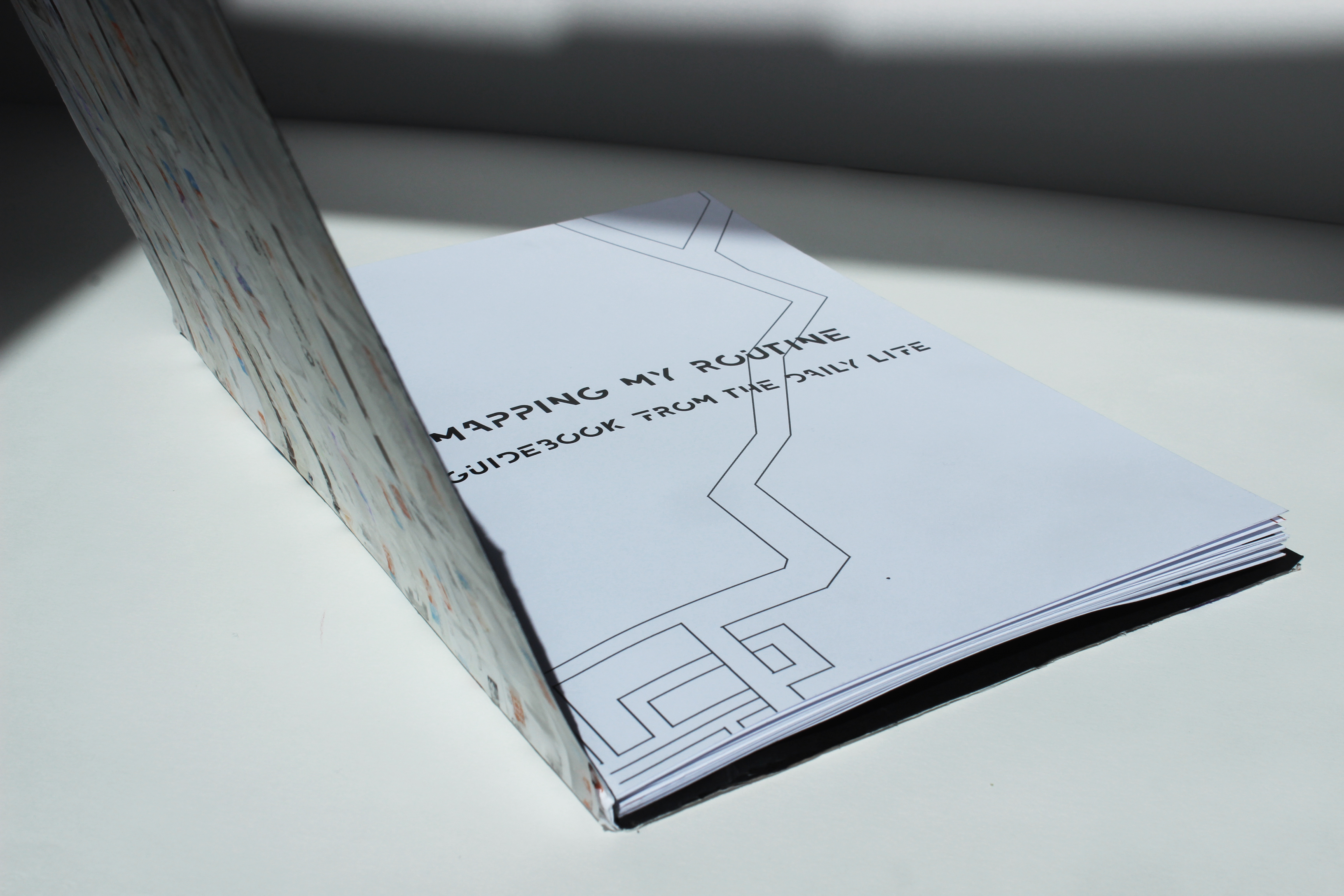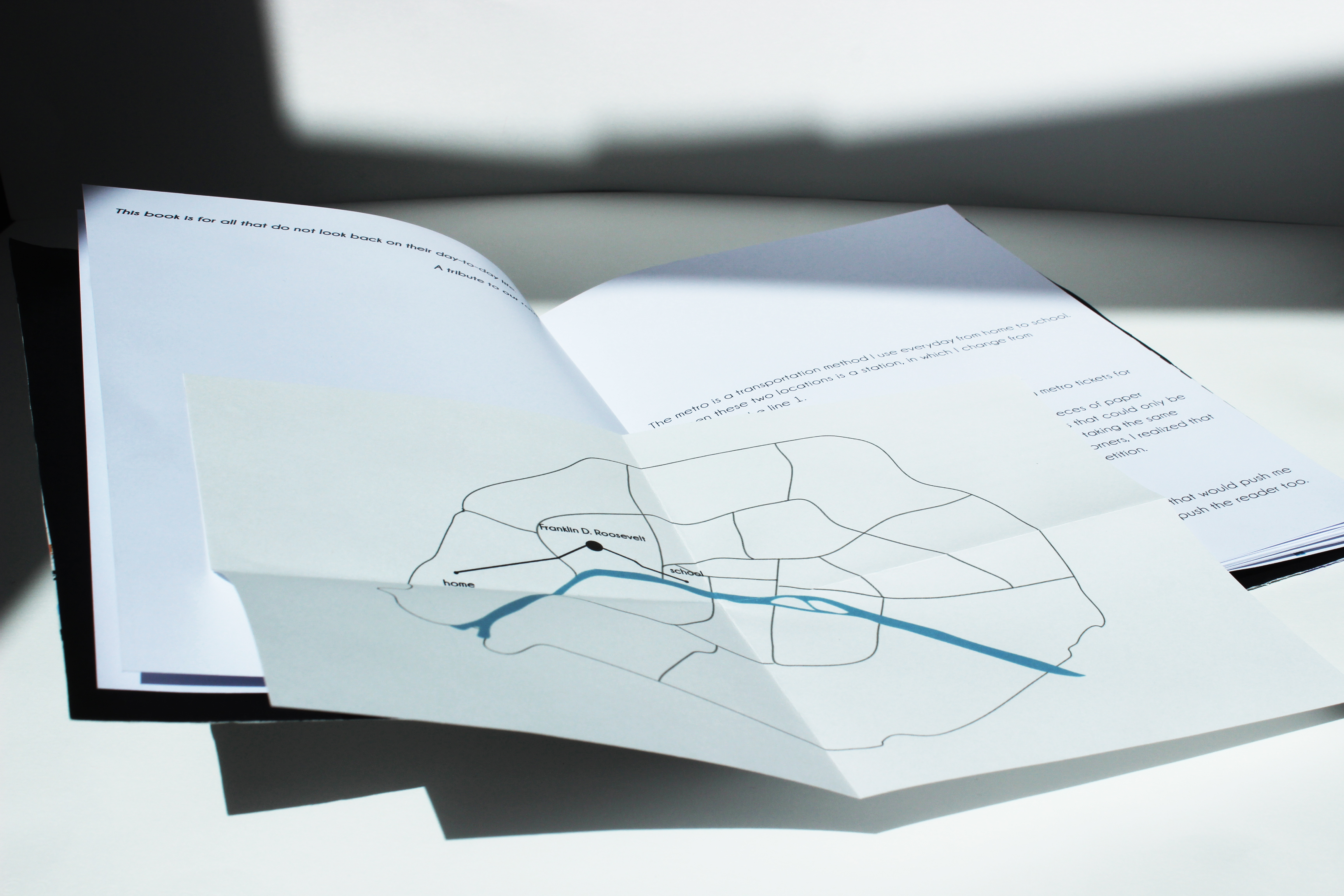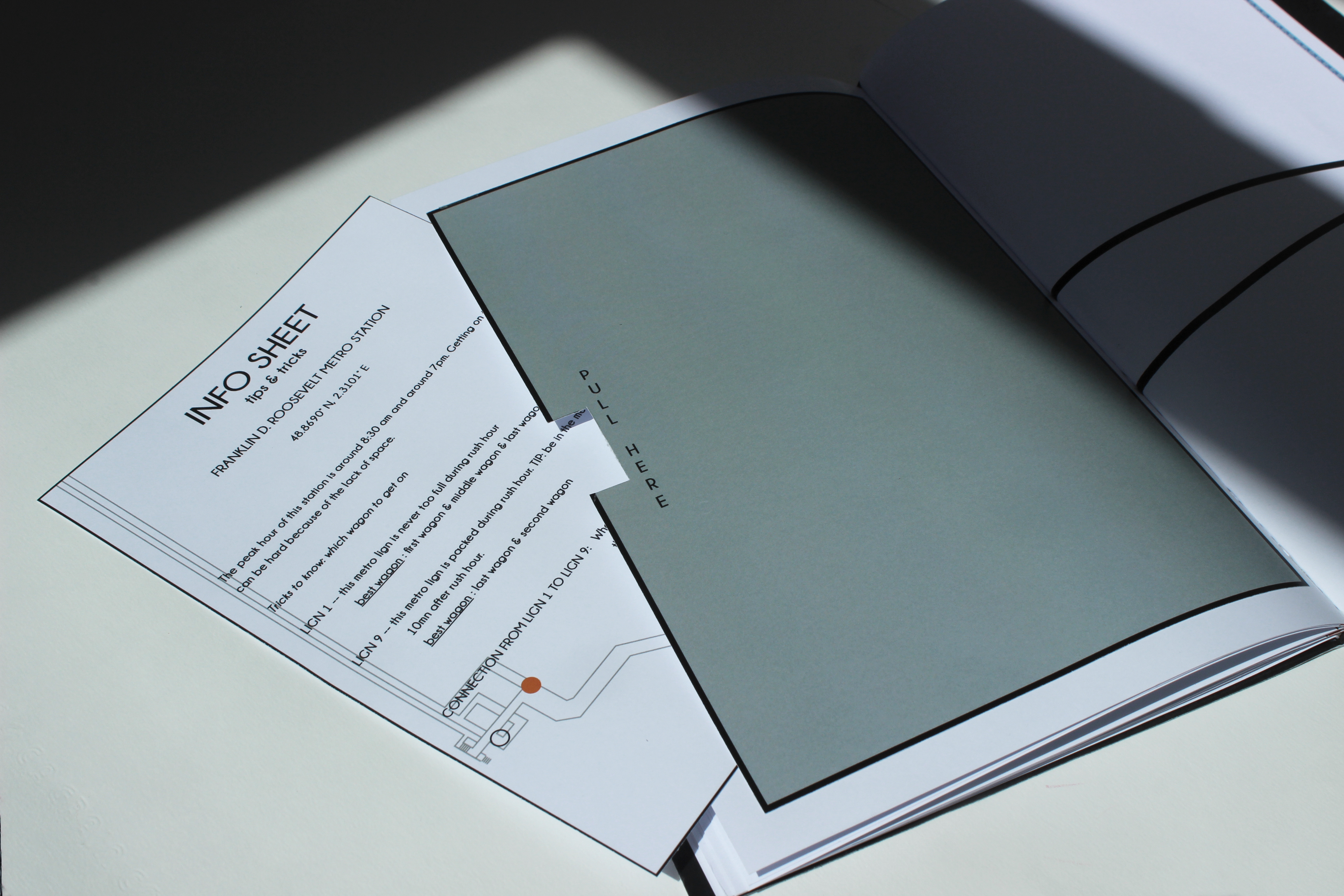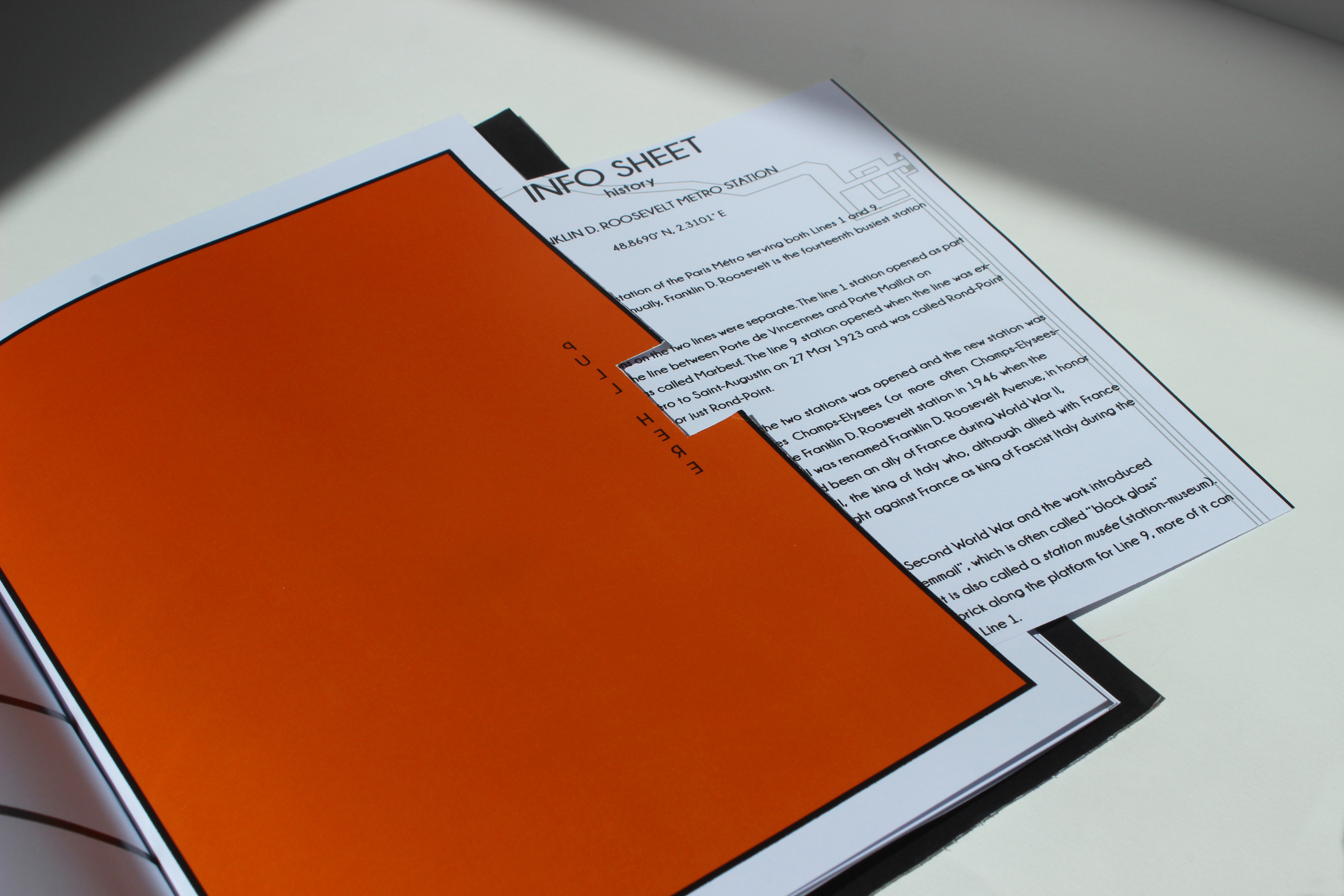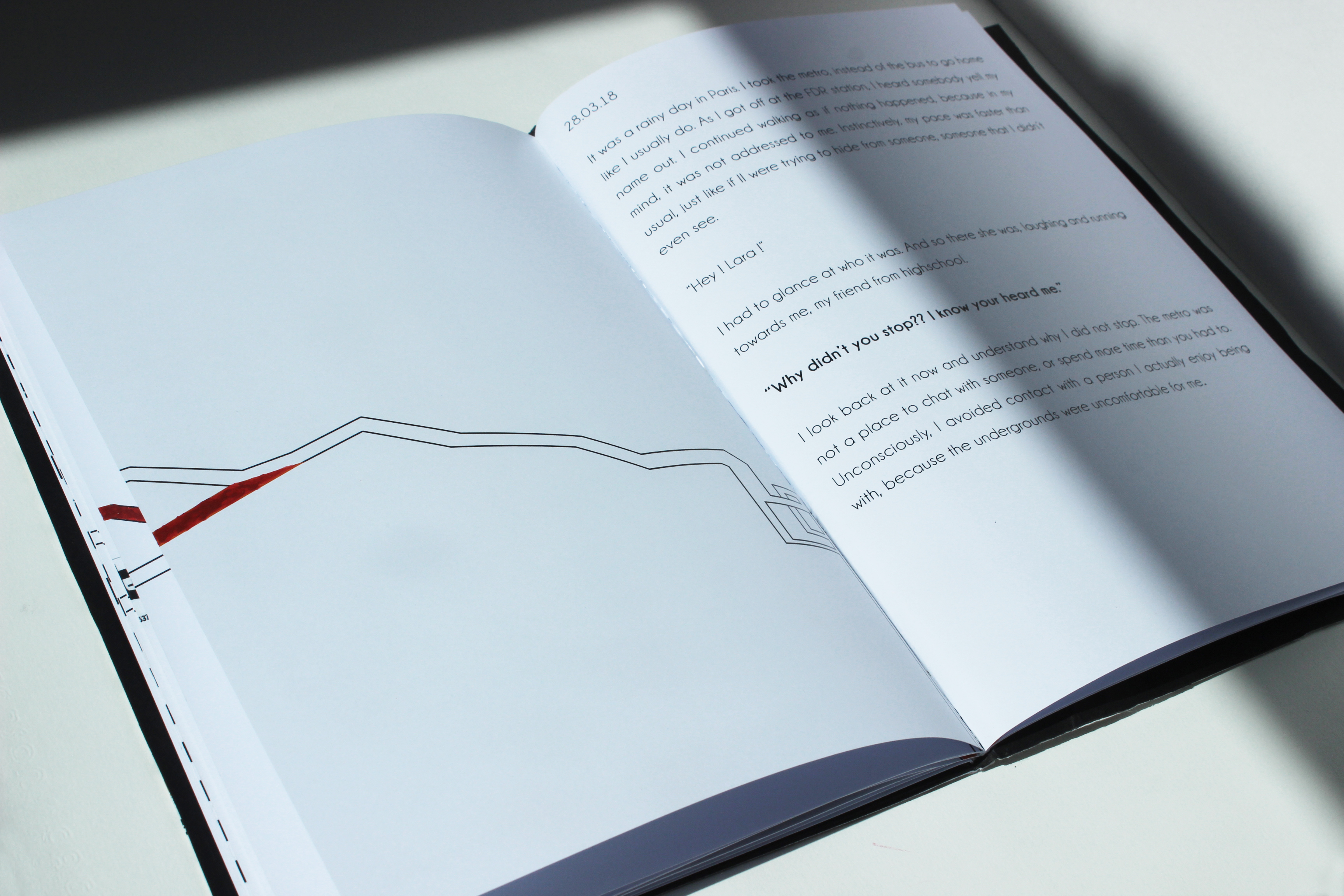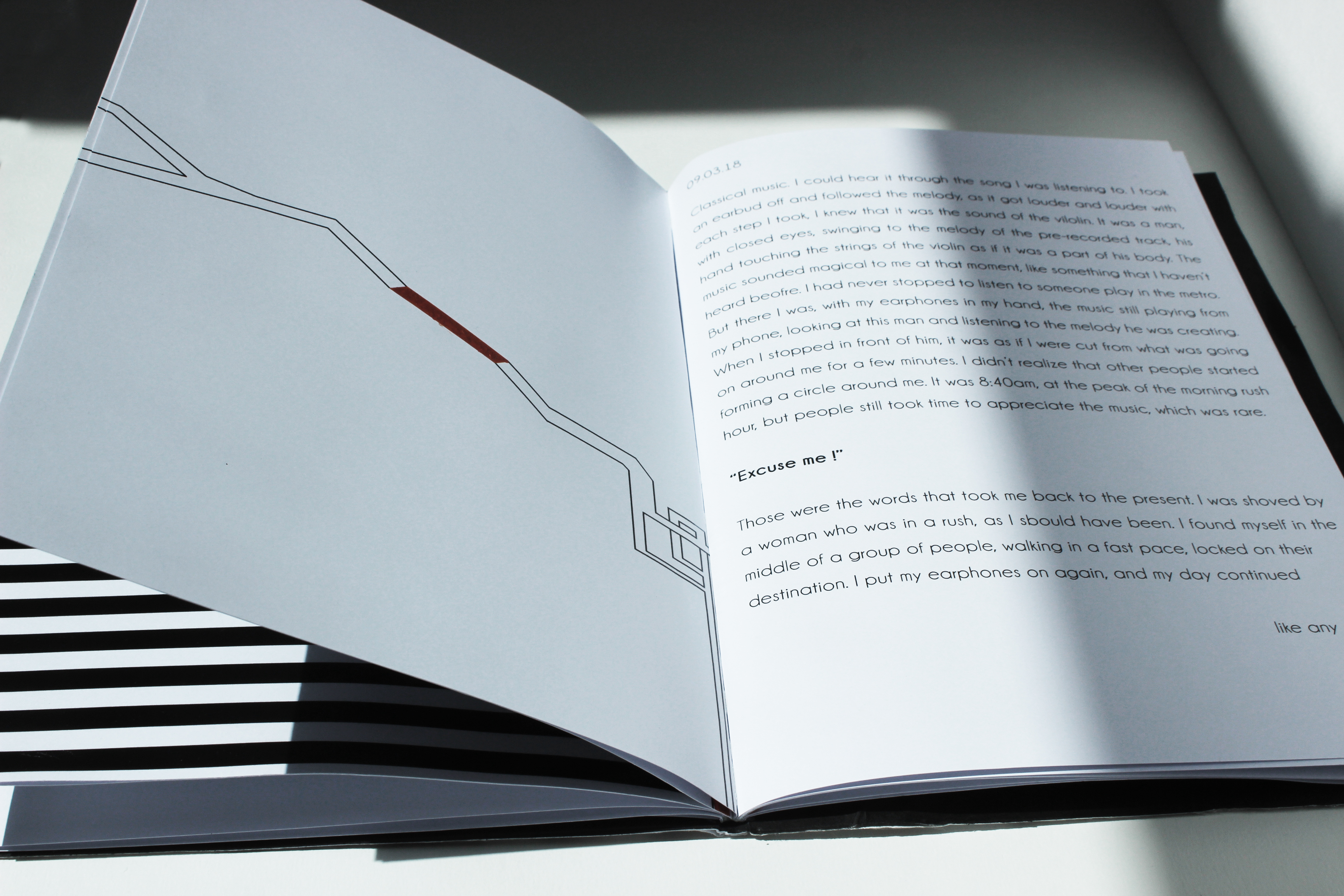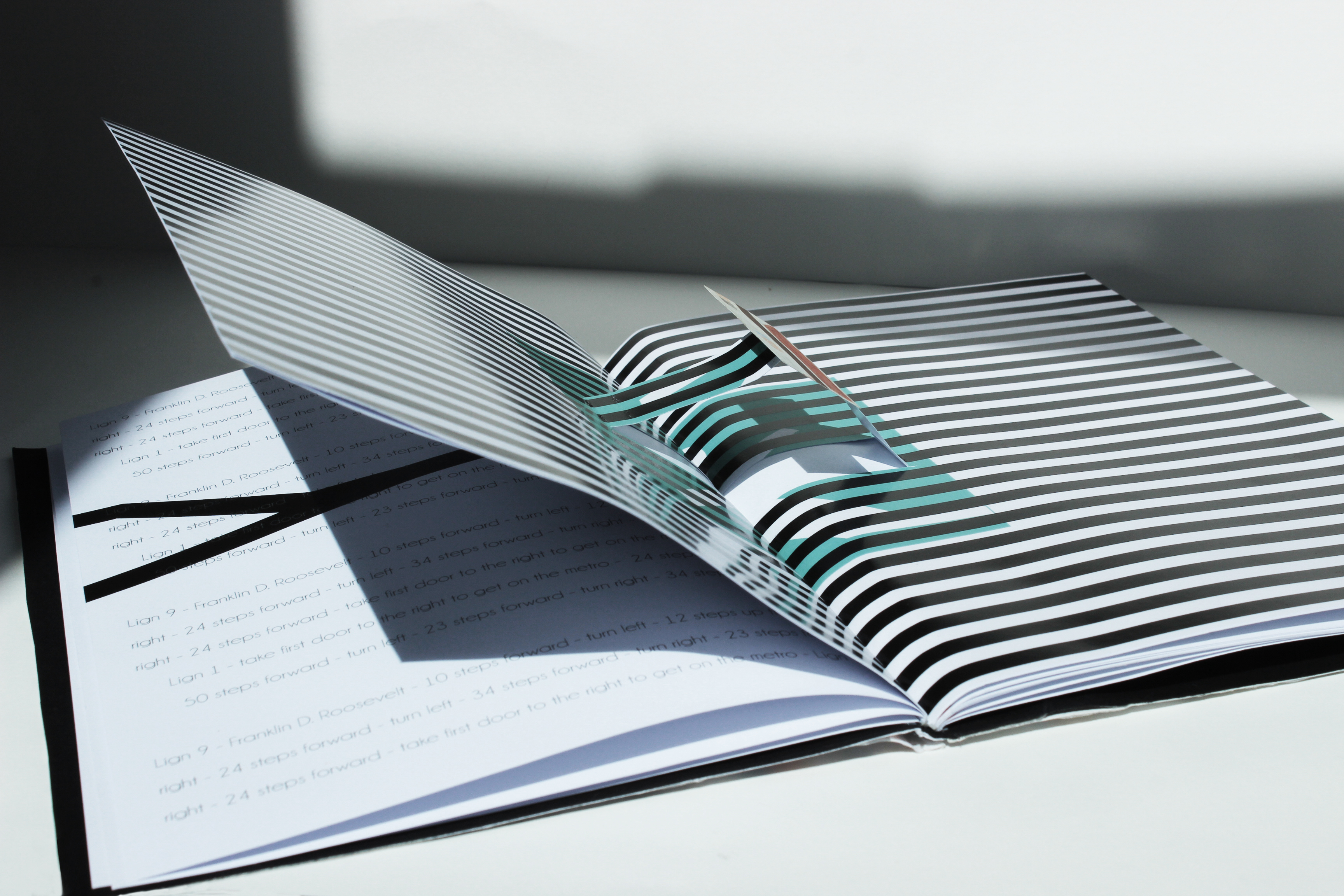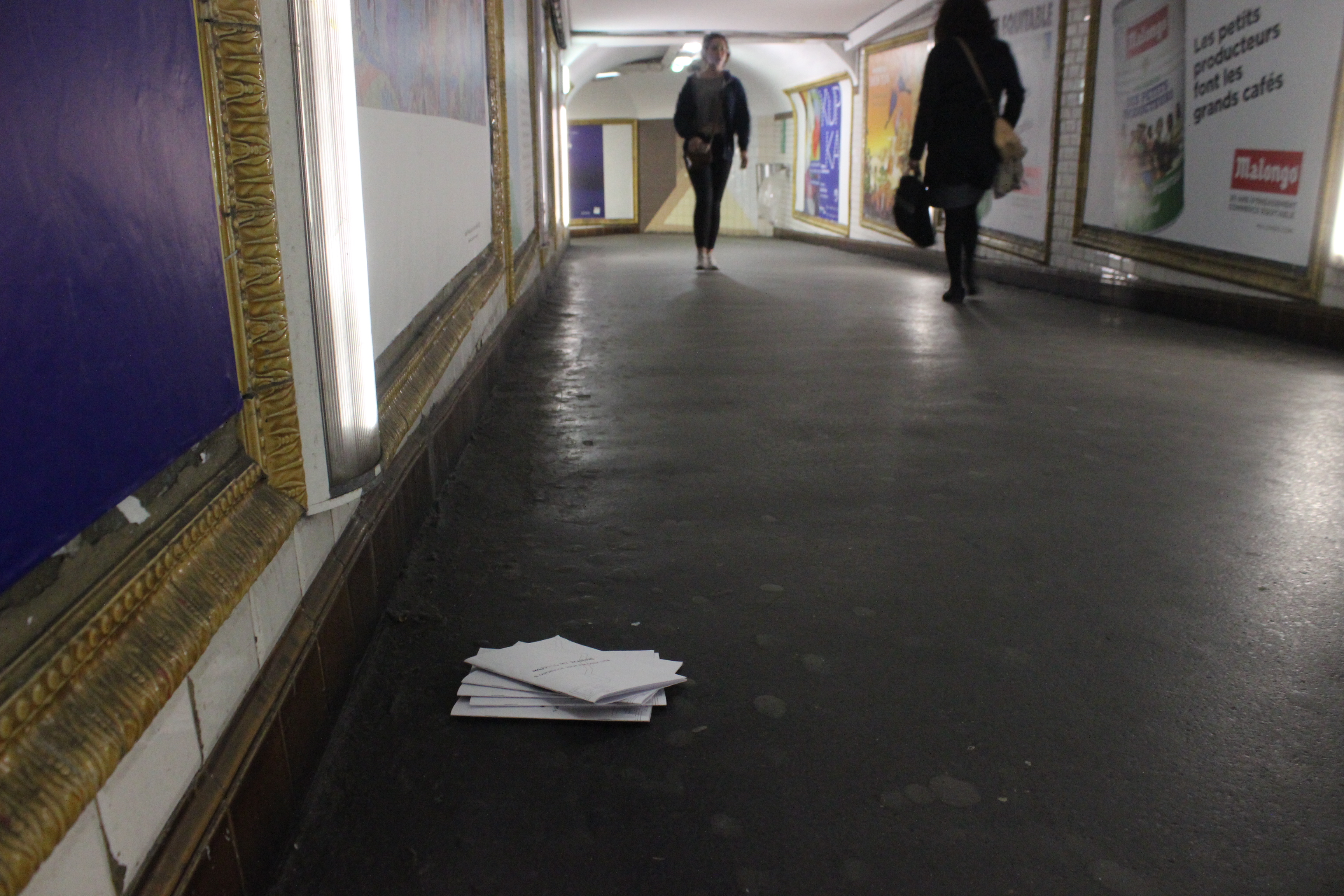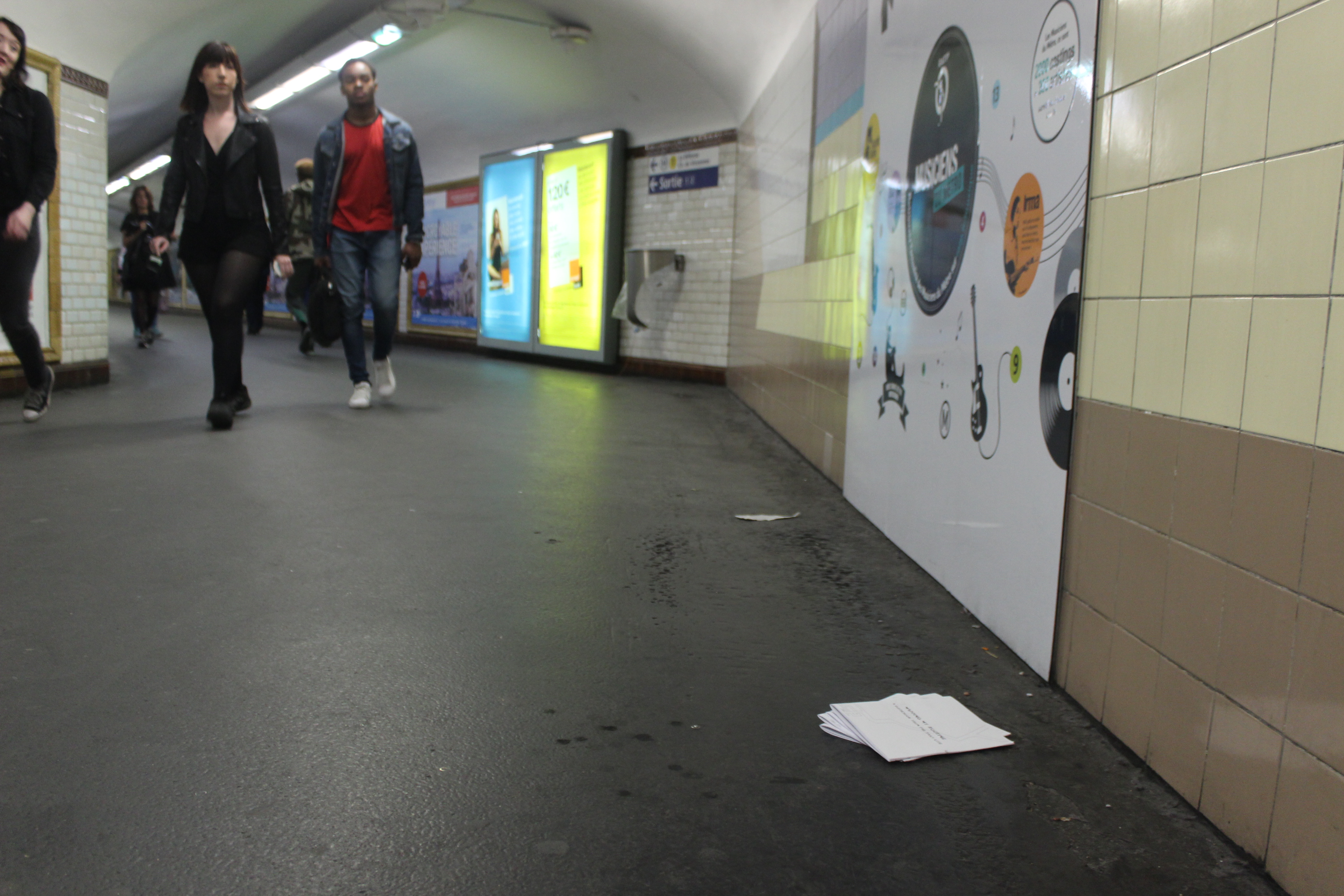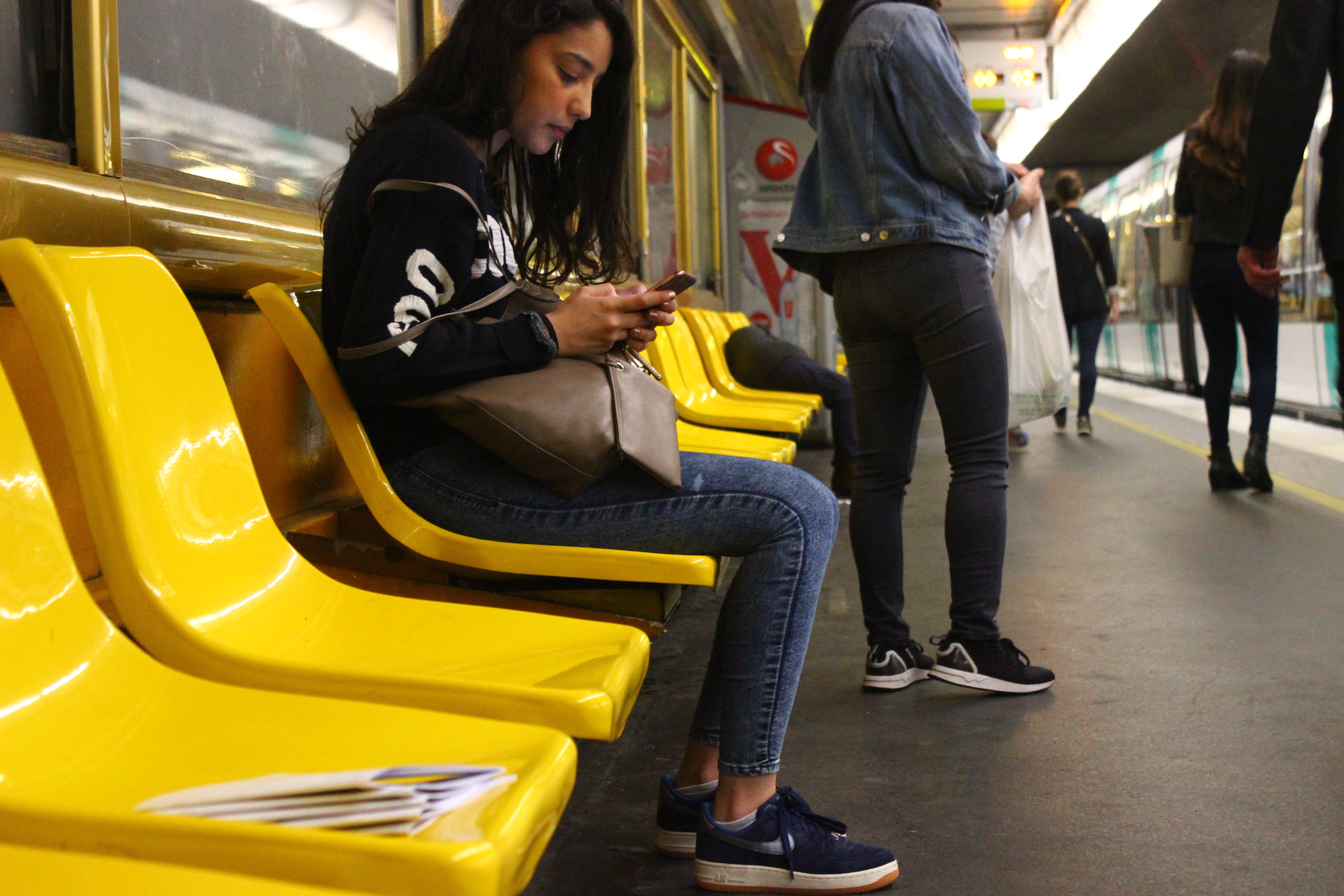Mapping My Routine: the guidebook of Franklin D. Roosevelt, is a two-part alternative guidebook inspired by the way children look at their surroundings. When you are young, every detail and every aspect of a space is interesting to your eyes, as you take time to discover and analyze what is around you. Mapping My Routine is a metaphorical approach to seeing the daily life with a child’s point of view, as it questions the importance given to everyday routines.
The project itself is a play on interactive books, shaped in the form of a guidebook for adults, giving specific information, such as which car to get on during rush hour, or which staircases to take to save time, as well as personal encounters and memories that occurred in the station. On every spread is an element that is connected to touch, whether it is a metro ticket pop-up, a 3D map or postcards. The interaction between the book and the reader is therefore present throughout the guidebook—an element used in children’s books to keep their audience entertained and focused on what they are reading. Mixing two forms of writing—guidebook style and journal style—this project aims to reclaim the value of the everyday, alongside a child-like awareness of one’s surroundings.
The second part of the project includes performances: leaving copies of the guidebook in the locations of the stories, and a presentation performance. The prints that are left in the station are intended to connect the public to the project, as they are presented like magazines to be flipped through while on the metro. The second performance is the presentation of the project: accompanied by the sounds of the metro, the audience is guided down to the basement where a video of a walk through the station is projected onto the wall, and stories from the guidebook are read out-loud. The intention behind presenting this project with a performance was to make the audience feel like they were in the metro station.
Playing with different senses with the recordings and anecdotes for audio, the video for sight, and the guidebook itself for touch, the audience was submerged in the story of Mapping My Routine.
